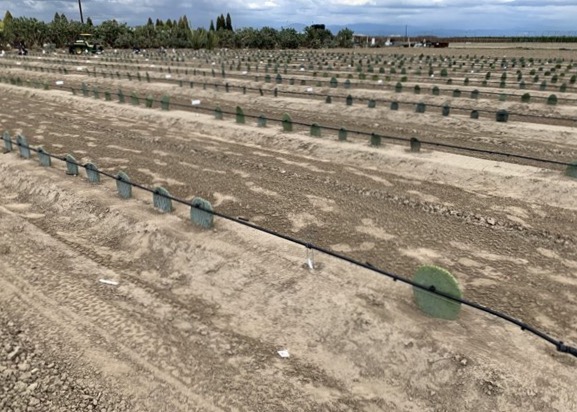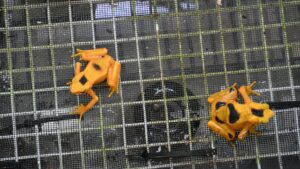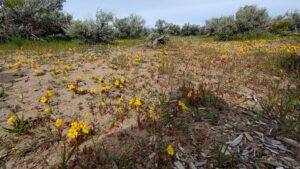
Cacti: The prickly poster child for desert and thirst. As the driest state in the country, Nevada is all too familiar with drought and extreme heat. Researchers from the University of Nevada, Reno’s College of Agriculture, Biotechnology, and Natural Resources are currently observing how our spiny friends, the cactus pear (Opuntia spp.), can be used as a bioenergy crop to make transportation fuels and electricity.
Biofuels are fuels that are obtained directly from renewable resources such as plants. Besides requiring a green thumb, typical bioenergy crops like soybeans, corn, and sugarcane need a lot of water and are expensive to turn into fuel. As an alternative, researchers are looking at the possibilities for cactus pear as a bioenergy resource due to its low maintenance, low cost to plant and grow, and low water needs.
In a 2021 study led by UNR scientists, cactus pear was found to be a productive plant as a food, feed, and bioenergy crop. Cactus pear is a crassulacean acid metabolism species (CAM) plant. This means it takes up CO2 through its leaf pores during the night, rather than during the day like most other species of plants. CAM plants are adapted to hot and dry environments and are more water-use efficient than non-CAM plant crop species such as soybeans or oats.
“Cactus pear will use only about 20 percent of the water needed to grow a comparable amount of biomass,” said John Cushman, professor of Biochemistry and Molecular Biology at UNR and one of the authors of the 2021 study. Ongoing field trials are finding highly productive characteristics of cactus pear and defining their “optimal fertilizer inputs to increase yield and lower production costs,” Cushman added.

There are multiple benefits to exploring cactus pear as a biofuel. First, cactus pears are inexpensive to plant and do not require a lot of maintenance, as perennial plants. Second, as Cushman explained during our interview, they use only one-fifth of the amount of water used by alfalfa, a major feed crop grown for dairy cows and horses in Nevada, California, and other Western states.
While cactus pear is inexpensive to plant, the major costs lie in converting it into bioethanol or methane; a complicated, expensive, and time-consuming process.
Despite these challenges, global research on CAM plants for bioenergy in dry environments is becoming popular as the climate crisis intensifies. CAM plants, representing only 7 percent of the world’s plants, are also appealing for their ability to draw CO2 from the atmosphere. This process, known as carbon sequestration, or “carbon ranching,” captures, removes, and stores CO2 from the atmosphere. A cool way to cool down the Earth, wouldn’t you say?

Further research of cactus pear as a biofuel will have major implications for the future of renewable energy as the Southwest continues to face drought conditions as a direct consequence of the climate crisis. The more water we use for agriculture and electricity, the less water we have for other uses. By converting cactus pear into biofuels for transportation and electricity production, we can reduce our water use while providing more renewable energy resources.
“Renewables include not only solar, wind, and geothermal, those have great benefits, but biofuels are part of that equation,” Cushman said. “There’s not going be one single solution. We have to be focused on all of those.”
Lupe Alvarez ’23 is an Anthropology major and Latinx Studies minor at UNR. She is a student in the News Studio: Science Reporting class in the Reynolds School of Journalism.





